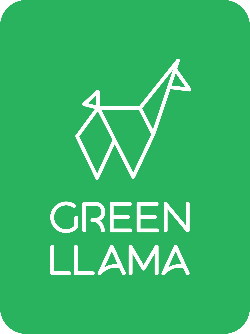Natural Cleaning Myths Busted: 7 "Hacks" That Don't Work (And What to Do Instead)
by Kay Baker on Oct 14, 2025
Green Cleaning Guides
Natural Cleaning Myths Busted: 7 "Hacks" That Don't Work (And What to Do Instead)
Transparency note: This article cites government sites, standards bodies, and peer-reviewed sources wherever possible. Educational only — not medical or legal advice.
The internet is a wonderful place, but it's also a digital Wild West of cleaning advice. A quick search can yield a flood of "miracle" hacks and DIY recipes passed down through generations. Some are gems. Others are ineffective at best and downright damaging at worst.
As your trusted guide in the world of non-toxic cleaning, we believe in using what works. That means leaning on real science, not just old wives' tales. It’s time to play myth-buster.
Here are seven of the most common natural cleaning myths you'll see online, debunked—along with the smart, science-backed solution that will give you a truly effective, non-toxic clean.
Myth 1: “Vinegar is a great all-purpose disinfectant.”
The Reality: While vinegar’s acidity makes it excellent for dissolving mineral deposits, it is not an EPA-registered disinfectant and hasn’t passed the required lab tests to claim it kills dangerous pathogens like Staph or E. coli. See the EPA’s List N and CDC guidance on environmental cleaning and disinfection.
The Smart Solution: Understand the difference between cleaning and disinfecting. For 99% of daily tasks, clean first to physically remove germs. When you truly need to disinfect, clean the surface first, then use an EPA-registered product with actives like citric acid or hydrogen peroxide.
Myth 2: “If it doesn’t foam, it isn’t working.”
The Reality: Big suds don’t equal big cleaning power. Lather height is mostly cosmetic; surfactants do the real work, and some high-lather surfactants (like SLS) can be irritating with prolonged contact. For background on irritant surfactants in household products, see this dermatology literature: clinical review (Springer) and clinical review (Wiley).
The Smart Solution: Judge by results, not bubbles. Concentrated solid dish soaps and modern plant-based surfactants cut grease effectively without a mountain of foam.
Myth 3: “Mixing baking soda and vinegar makes a super-cleaner.”
The Reality: Fun volcano, mediocre cleaner. Mixing an acid (vinegar) and a base (baking soda) mostly neutralizes them into water, CO₂, and sodium acetate — not a powerhouse detergent.
The Smart Solution: Use them separately and in sequence: scrub with a baking-soda paste first, then spritz vinegar to help lift loosened grime before rinsing.
Myth 4: “Lemon juice + olive oil is the best wood polish.”
The Reality: Olive oil can go rancid and get sticky; acids can dull modern polyurethane finishes over time. For care guidance, see the National Wood Flooring Association’s homeowner resources (NWFA maintenance overview).
The Smart Solution: For sealed wood, dust with a barely damp microfiber and a pH-neutral cleaner. For occasional shine, choose a purpose-made wax or a polish formulated with stable oils.
Myth 5: “Magic erasers clean anything — no chemicals involved.”
The Reality: Magic erasers are melamine foam — essentially ultra-fine sandpaper. They abrade finishes and can dull glossy paint, cabinets, and some appliance surfaces.
The Smart Solution: Prefer chemistry over abrasion where possible — e.g., dissolve soap scum with mild acids instead of grinding it away.
Myth 6: “Water + microfiber is all you ever need.”
The Reality: Microfiber is fantastic for dusting and buffing, but water alone doesn’t solubilize oils. For kitchen grease and oily fingerprints, you need surfactants to surround and lift oils.
The Smart Solution: Pair microfiber with a well-formulated, pH-appropriate cleaner (like a plant-based all-purpose) to cut oils and leave no residue.
Myth 7: “If an ingredient is ‘natural,’ it’s automatically safe.”
The Reality: “Natural” ≠ “non-toxic.” Many essential oils can irritate skin if misused and several are hazardous to pets, especially cats. See the ASPCA’s guidance on essential oils and pets (ASPCA).
References
- EPA — List N: Disinfectants for Coronavirus (SARS-CoV-2).
- CDC — Environmental Cleaning & Disinfection Guidance.
- Dermatology review of irritant surfactants (SLS) — Clinical review (Springer); Clinical review (Wiley).
- American Chemical Society — Baking Soda & Vinegar reaction.
- National Wood Flooring Association — Maintenance overview.
- ASPCA — Essential oils & pets.





